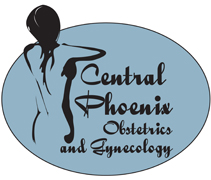High Risk for Breast Cancer, Now What?

Breast cancer is leading cause of cancer death in women
- 2022, an estimated 287,850 new cases of invasive breast cancer are expected to be diagnosed in women in the U.S., along with 51,400 new cases of non-invasive (in situ) breast cancer. About 2,710 new cases of invasive breast cancer are expected to be diagnosed in men in 2022.
- About 5-10% of breast cancers can be linked to known gene mutations inherited from one’s mother or father.
- About 85% of breast cancers occur in women who have no family history of breast cancer.
What is High Risk?
Breast cancer increases with age. It is seen most commonly in women over age 50 but cases start to rise in the 40s. the average woman has about a 12% risk of a breast cancer diagnosis in her lifetime.
Factors that increase that percentage include:
- –Strong family history of breast and ovarian cancer. Breast cancer in 1st degree relatives increases risk–mother, sister or daughter.
- multiple family members
- family members diagnosed at age < 45
- male breast cancer
- — Genetic mutations. BRCA1 and BRCA2 are the most well known but other gene mutations are associated with increased risk.
- Individuals with hereditary risk for breast cancer may have up to an 85% lifetime breast cancer risk.
- –History of abnormal breast biopsy. Some types of atypical cells on biopsy you at a higher risk.
- –Dense breasts. Breasts comprised of more connective and glandular tissue and less fatty tissue have been associated with higher cancer risks.
- –History of chest wall radiation at a young age. For example, chest radiation for childhood lymphoma increases breast cancer risk
- –A risk assessment of greater than 20 percent lifetime risk of invasive breast cancer.
What tests should you get if you’re high risk?
For dense breasts
According to ACOG current published evidence does not demonstrate meaningful outcome benefits (eg, reduction in breast cancer mortality) with supplemental tests in women with dense breasts who do not have additional risk factors.
For BRCA gene carriers: aged 25–29 years
–clinical breast examination every 6–12 months and annual MRI.
–Magnetic resonance imaging of the breast with contrast is preferred over annual mammography from ages 25–29 years to reduce extended radiation exposure
#1 talk to your healthcare provider to develop an individualized plan
–This may include additional screenings like a breast MRI, or breast ultrasound
–You may consider prophylactic mastectomy
#2 make sure you continue your routine mammogram screening
#3 Breast awareness
–While monthly self-exam is also no longer recommended as an option for women of any age, if you feel a lump or difference in your breasts you should see your provider for further evaluation
Can I reduce my risk with lifestyle changes?

Studies have shown that combined hormonal contraceptive use specifically in BRCAcarriers decreases risk of ovarian and uterine cancer
Don’t smoke or quit smoking
Use alcohol infrequently
Get moderate exercise daily
Maintain a healthy weight
Breast Cancer Survival is Improving
While there is some variation in these rates based on race and ethnicity, women now being diagnosed with breast cancer have a better outlook than women diagnosed 10 years ago as analysis of tumors and treatments improve over time.

Source: https://www.cancer.org/cancer/breast-cancer/understanding-a-breast-cancer-diagnosis/breast-cancer-survival-rates.html
Overdue for your check up?
Click the link to schedule
Blog Posts
Call Or Visit
Your 21st Century Women's Resource Center
926 E. McDowell Road
Suite 134
Phoenix, Arizona 85006
Phone (602) 288-0777
Fax 602-254-4712

Follow Us!